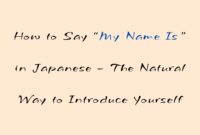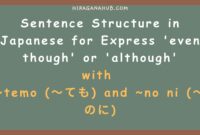Introduction to Japanese Particles: Wa, Mo, and Ga (は, も, が)
Dive into the basic structure of the Japanese language by exploring three
fundamental particles: Wa (は), Mo (も), and Ga (が). These particles, known
as ‘joshi’ (助詞), play pivotal roles in sentence construction.

Particle Wa (は)
Commonly referred to as the topic marker, Wa (は) doesn’t translate directly
but structures a sentence by indicating the topic of discussion. The format is
TOPIC+WA+COMMENT. It can refer to a subject or an entire sentence. Examples:
学校は新しいです。 –
がっこうはあたらしいです (Gakkou wa atarashii desu): The school is
new. ジョンはアメリカから来ました。 –
ジョンはアメリカからきました (John wa Amerika kara kimashita): John
came from America.
Particle Mo (も)
Mo (も) translates to “also” in English and follows a similar structure to Wa
(は). It adds information by connecting additional subjects or objects.
Examples:
私も学生です。 – わたしもがくせいです (Watashi mo
gakusei desu): I am also a student. 彼も来ます。 –
かれもきます (Kare mo kimasu): He will also come.
Particle Ga (が)
Ga (が) identifies a specific subject within a sentence, much like Wa (は).
It’s used to introduce a new or previously unknown subject. Examples:
猫が好きです。 – ねこがすきです (Neko ga suki desu):
I like cats (introducing a preference). 誰が行きますか? –
だれがいきますか? (Dare ga ikimasu ka?): Who is going?
Differences Between Wa and Ga
Use Wa (は) when the subject is known to the listener, and Ga (が) when it is
unknown. While Wa and Ga can often be interchangeable, they serve different
emphases depending on the context.
Example Sentences Format:
猫が好きです。 – ねこがすきです (Neko ga suki desu):
I like cats.
Vocabulary List:
| Kanji | Hiragana | Romaji | English |
|---|---|---|---|
| 学校 | がっこう | gakkou | school |
| 新しい | あたらしい | atarashii | new |
| アメリカ | アメリカ | Amerika | America |
| 学生 | がくせい | gakusei | student |
| 猫 | ねこ | neko | cat |
| 好き | すき | suki | like |
| 誰 | だれ | dare | who |
This brief overview introduces you to the basic particles Wa, Mo, and Ga in
Japanese. Understanding these will aid in forming more complex sentences and
enhance your grasp of the language. Keep exploring and don’t hesitate to make
mistakes, as language learning is an evolving process. Happy learning!


